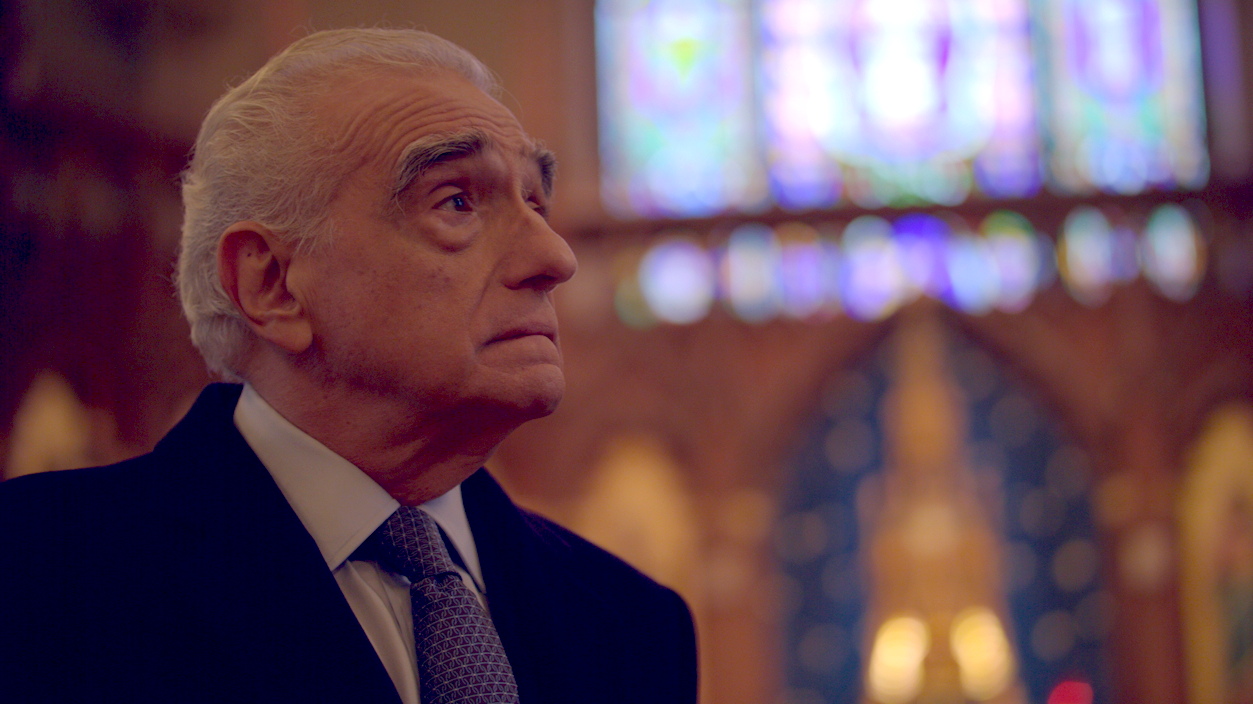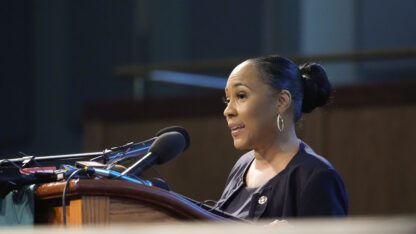‘The Oratorio: A Documentary with Martin Scorsese’ reveals a milestone music event from 1826

Martin Scorsese in Old St. Pat’s Cathedral.
Courtesy of Jon Nelson / Provenance Productions
A once-in-a-lifetime, twice-in-two-centuries spectacle is the subject of a new documentary created with the help of famed director Martin Scorsese. The filmmaker lent his assistance to the director, writer, and producer Jonathan Mann in chronicling efforts to recreate a mostly-forgotten operatic performance at New York’s Saint Patricks’ Cathedral in 1826, “the Oratorio“. The Cathedral was a fixture in the lives of Scorsese’s family going back generations. The revival of the lost “Oratorio” performed originally within its walls some two hundred years ago resulted from an improbable confluence of epic events. Mann joined “City Lights” host Lois Reitzes via Zoom to talk about his new documentary, “The Oratorio: A Documentary with Martin Scorsese,” and the remarkable history it traces of a choral musical achievement nearly lost to time. ATL PBA is airing “The Oratorio” Friday, Nov. 5 at 11 p.m.
The wildlife of Lorenzo Da Ponte, who first staged the Oratorio:
“It’s an amazing assemblage of figures, a cast of characters that somewhat defies reason in all those involved. We started with the protagonist, Lorenzo Da Ponte, as a side note, but very quickly realized he was the musical note that held the film together,” said Mann. “Lorenzo Da Ponte, of course, known as Mozart’s great librettist, wrote everything from ‘Marriage of Figaro to Don Giovanni.’ He is a character who… if we were playing one of those games, ‘Who can I have dinner with and go back in time,’ I now fully appreciate he’d be at that table.”
“He was, for lack of a better term, a real scoundrel. He lived in a brothel, and he incurred massive gambling debts … So he was forced, at one point, to leave Venice,” Mann recounted. “In London, he was in debtor’s prison time and time again and finally fled London for the New World. He headed to America, and this great Italian man ended up on the Lower East Side as a poor grocer. It’s hard to fathom today, but that’s where he was found until rescued, and he ended up being the first professor of Italian language at Columbia College, now Columbia University. And his passion for opera left him needing to stage an event and put opera, Italian opera, back in the fold.”
“Sadly, it doesn’t end in life,” said Mann. “There is a great deal of mystery of where he is interred — Italians continue to scour. His body was removed and brought to Queens, New York, and lost in one of the great cemeteries.”
On Saint Patrick’s Cathedral’s place in the culture of New York:
“As Martin Scorsese says in the film, immigrants of every group were coming to the shores of this country, found the church as a bedrock, brought with them their culture, and that that is the best of America. Quite a resonant phrase, given where we are,” said Mann. “But it is tied right between Little Italy and now Chinatown, and the immigrant experience. There were initially Irish who controlled the church, and the Italians were forced to have their services in the sanctuary below the altar, underground. Then the Italian community took more of a hold. The Asian community is worshipping there today, as is Hispanic and Latin communities.”
“In our film, we’re fascinated with the church as a historical, living, breathing location,” said Mann. “For us, it’s not about the orthodoxy, the religion, but just culturally, what it presents. And with its giant walls, to protect from being fired upon by the [anti-immigrant group] Know-Nothings, and the history by which it was saved from being set ablaze, it’s … an artifact. It really is.”
“This was where [Scorsese] and his friends would play in the cemetery as kids. They would come in to attend mass and get chewed out by the priest for getting there late; he was an altar boy. It very much formed his vision, artistry, and he says he always comes back to it to obtain a measure of understanding, appreciation, and what it is to be an artist. Scorsese did situate several of his movies as part of Old Saint Pat’s,” said Mann.
On the music of the Oratorio, as near as scholars can determine:
“Whether or not [Da Ponte] personally selected all of the music, that’s not going to be known. We have, from scholarship derived by several musicologists, including the re-staging by a gentleman who came over from Italy who studies music, what he believes to be the vast majority of pieces that were part of the performance. So, in essence, it is liturgical music. It’s also operatic music, which was a first in the New World. In New York, Italian opera just was unknown,” said Mann. “The lovely thing, this single performance … was attended by, we believe, as many as two thousand locals who would not have just been the cream of society, but everyday middle Americans.”
“It was magnificent … [Italian opera company Teatro Lirico di Cagliari brought] their entire opera company, musicians, two magnificent soloists,” said Mann. “We’re never going to know, two hundred years ago, if we heard what they heard. But I think, by most reputable accounts, we’re hearing about 90% of the original performance. The acoustics — they haven’t changed. Those walls still resonate.”
“The Oratorio: A Documentary with Martin Scorsese” airs on ATL PBA and other PBS affiliates nationwide on Nov. 5. More information is available at www.pbs.org/show/oratorio-documentary-martin-scorsese.





